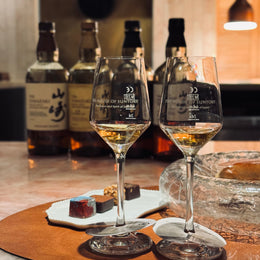
In a departure from my usual sake reviews, this time I will be focusing on the rice variety rather the actual sake itself. This is for good reason, though, as the particular rice in question will surely be of interest to any fellow Omachists out there. Amazingly, however, the resurrection late last year of Funaki Omachi 船木雄町, a genuine pure-strain of perhaps Japan's most beloved sake rice, seems to have gone relatively unnoticed from within the sake community.
So what is Funaki Omachi, and what makes it so special? Well, to answer that question it is important to firstly differentiate between genuine pure-strain Omachi and the number of other modern crossbreeds that, although bearing the name, are not actually the genuine article. For example, due to the wonderful nuanced sake that Omachi often produces, over the years, many attempts have been made to domesticate it. I have written in the past several times about how difficult it is for both the farmers and brewers to handle, and for many it is a hassle they just don't need. Therefore, crossbreeding with more durable strains has been carried out to reduce the height of its towering stalks, tame its wild shinpaku (starchy centre), and shorten the time it takes to cultivate. Perhaps the most famous of these are Kairyo-Omachi 改良雄町 from Shimane, developed in 1960, and the more recent Koi-Omachi こいおまち developed in 1993 in Hiroshima.
However, by trying to domesticate something that is appealing to consumers precisely because of its wild nature has always seemed rather futile. It is because of Omachi's little quirks and foibles that we love it so much. By trying to smooth out some of the rough edges, much of its unique character is lost in the process, and the differences in characteristics are significant. Therefore, with any discussion surrounding Omachi it is important to clearly distinguish between two separate groups: Pure Omachi 純雄町 and Crossbred Omachi 品種改良雄町.
Within the former group, several varieties exist that have evolved over time according to the area in which they were cultivated. The most famous of these is undoubtedly Akaiwa 赤磐 in the eastern part of Okayama Prefecture, with Omachi from that region demanding some of the highest prices for sake rice in all of Japan. In the past, neighbouring Hiroshima, too, had some very distinguished regions of its own, namely Hiba 比婆 in the north, and, you guessed it, the village of Funaki in what is now the region of Hongo, in eastern Hiroshima. However, the development of Kairyo-Omachi soon led to these pure strains being phased out, and seeing the term "Hiroshima Omachi" on a sake label often meant that what was actually in the bottle was most likely brewed from a crossbreed, twice removed from the original Okayama strain.

This latest release from Saijo powerhouse Kamotsuru, therefore, marks an important revival for a once forgotten strain, and a step in the right direction for renewed cultivation of genuine Omachi in Hiroshima. Although nowadays Hiroshima sake is synonymous with the numerous Hattan 八反 strains that also enjoy widespread cultivation throughout Japan, the genes of Hiroshima Omachi have permeated into countless other rice varieties that we regularly enjoy today. Okayama is, of course, it's true homeland, and that will always remain the case. But the greater history of Japan's oldest pure strain is only further enriched by the numerous other regions that at one time or another have been successful in cultivating it.
In what could be Funaki Omachi's greatest contribution to this legacy is the very real possibility that it was from this very strain that the first ever winner of a nationwide sake contest was brewed. What we know for sure is that the top prize from the inaugural event, of what was known then as the Zenkoku Seishu Hinshukai 全国清酒品評会 (the precursor to the Zenkoku Shinshu Kanpyokai 全国新酒鑑評会), was awarded to the brand Ryusei from Hiroshima. The rice used was Omachi from their own fields situated in none other than Hongo. If it is indeed Funaki, wouldn't that be a wonderful contribution to the history of this already fascinating variety...

This piece was originally featured on Origin Sake.
Origin Sake aims to uncover the many fascinating and complex aspects of Japan's national beverage. Through a better understanding of brewing techniques, we can begin to unravel sake's numerous mysteries.
Head over to Origin Sake for more!
Website: Origin Sake
You can also support Origin Sake here.







